Flag Day Worksheets (12 Free Coloring Pages)
Learn all about the history of the American flag with our Flag Day worksheets.
Flag Day is celebrated on June 14th as that is the day in 1777 when the Second Continental Congress approved the design of a national flag.
In 1916, President Woodrow Wilson issued a proclamation that officially established June 14 as a holiday. But it wasn’t until 1949 that it became a national holiday, and President Harry Truman signed it into law.
These free printable patriotic worksheets are great any time of the year but especially on Flag Day.
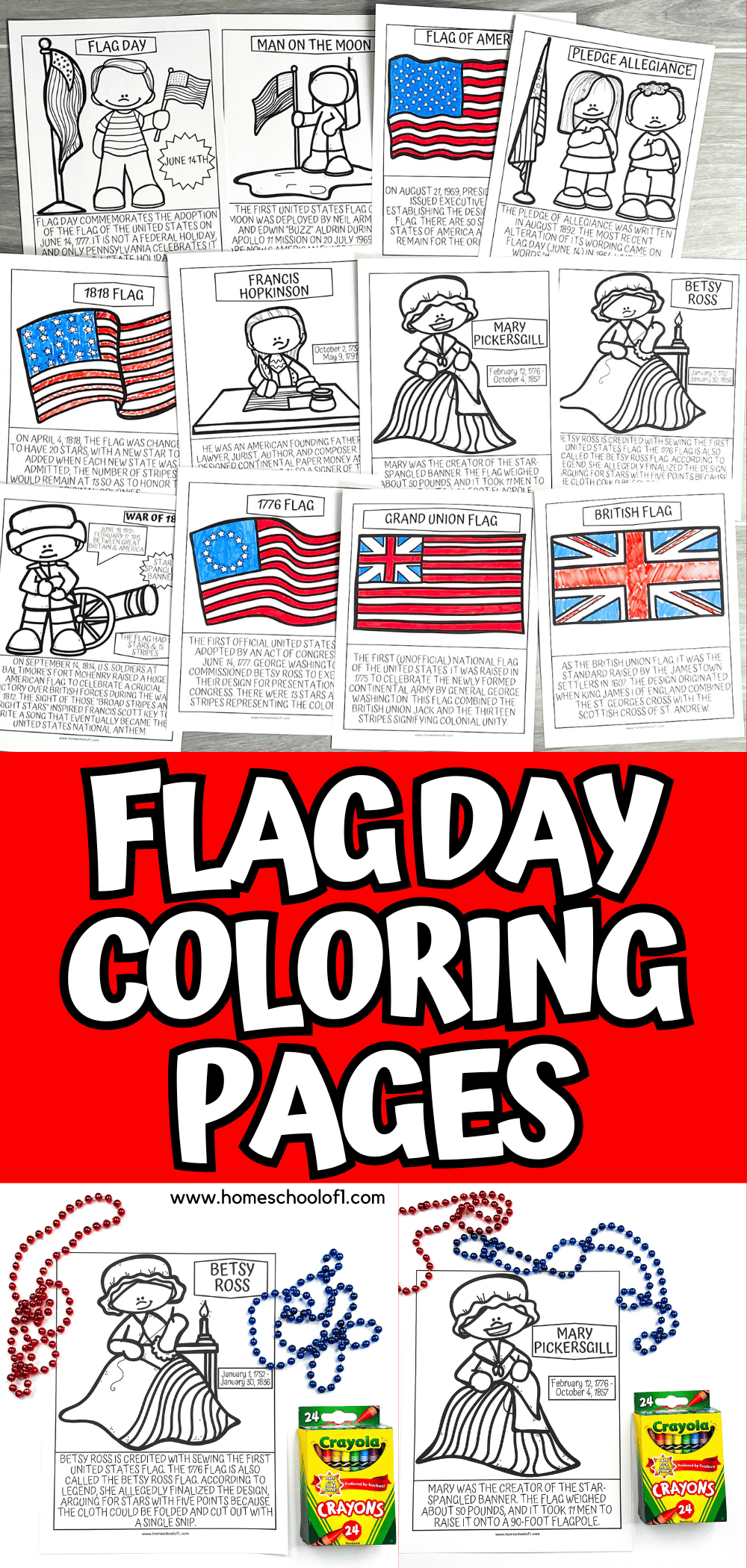
**This post may contain affiliate links. As an Amazon Associate and a participant in other affiliate programs, I earn a commission on qualifying purchases.**
History of the flag of America coloring pages
Download the printable Flag Day activities below. There are 12 free coloring pages for kids included. Make sure to check the printer settings.
These printable Flag Day worksheets are free to print but are for personal and classroom use only. Scroll to the bottom of the post and add your email address to get the pdf file.
There are 12 Flag Day worksheets all about the history of the American flag. Add these worksheets to your lesson plans in your history lessons or social studies with kids in second grade or above.
British Flag
As the British Union Flag, it was the standard raised by the Jamestown settlers in 1607. You will also enjoy our free Christopher Columbus worksheets.
The design originated when King James I of England combined the St. George Cross with the Scottish Cross of St. Andrew.
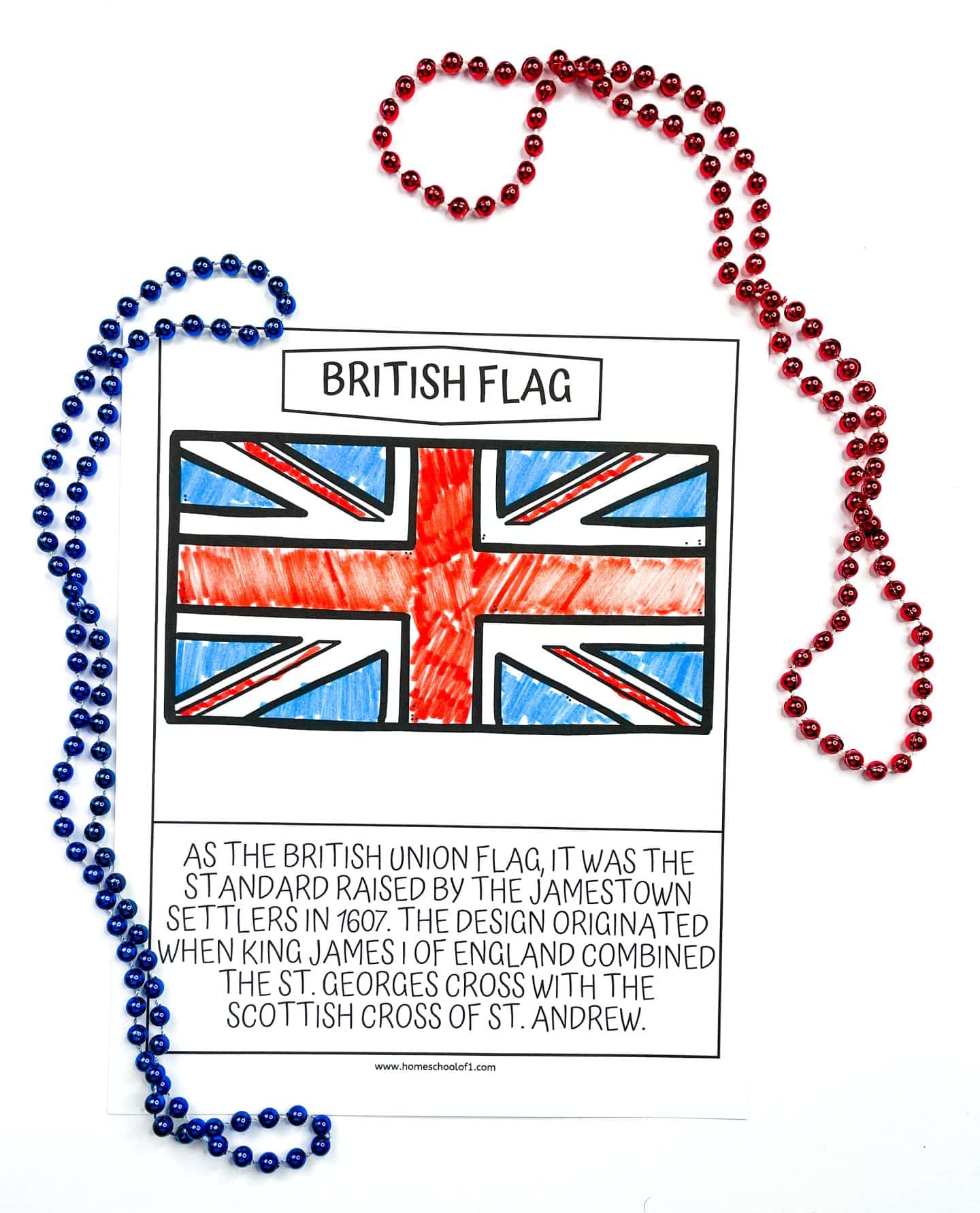
Grand Union Flag
The first (unofficial) national flag of the United States.
It was raised in 1775 to celebrate the newly formed Continental Army by General George Washington. These free George Washington worksheets for kindergarten and free printable George Washington worksheets can also be used.
This flag combined the British Union Jack and the thirteen red and white stripes signifying Colonial unity.
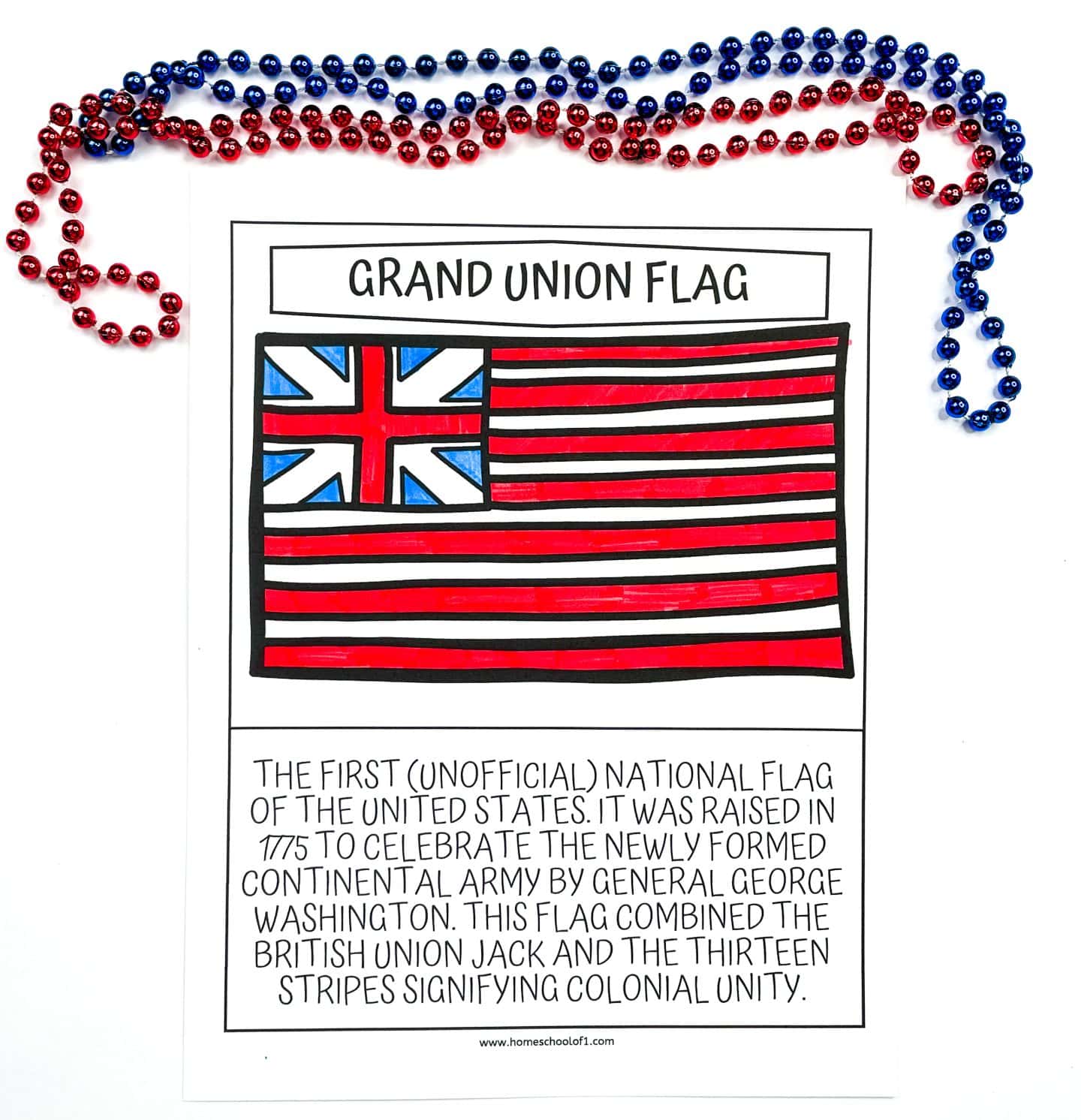
Francis Hopkinson
October 2, 1737 – May 9, 1791
He was an American Founding Father, lawyer, jurist, author, and composer. You will also enjoy our free Founding Fathers coloring pages.
Francis Hopkinson designed Continental paper money and the 1776 flag.
He was also a signer of the Declaration of Independence in July 1776. Learn more and download our free Declaration of Independence worksheet printables.
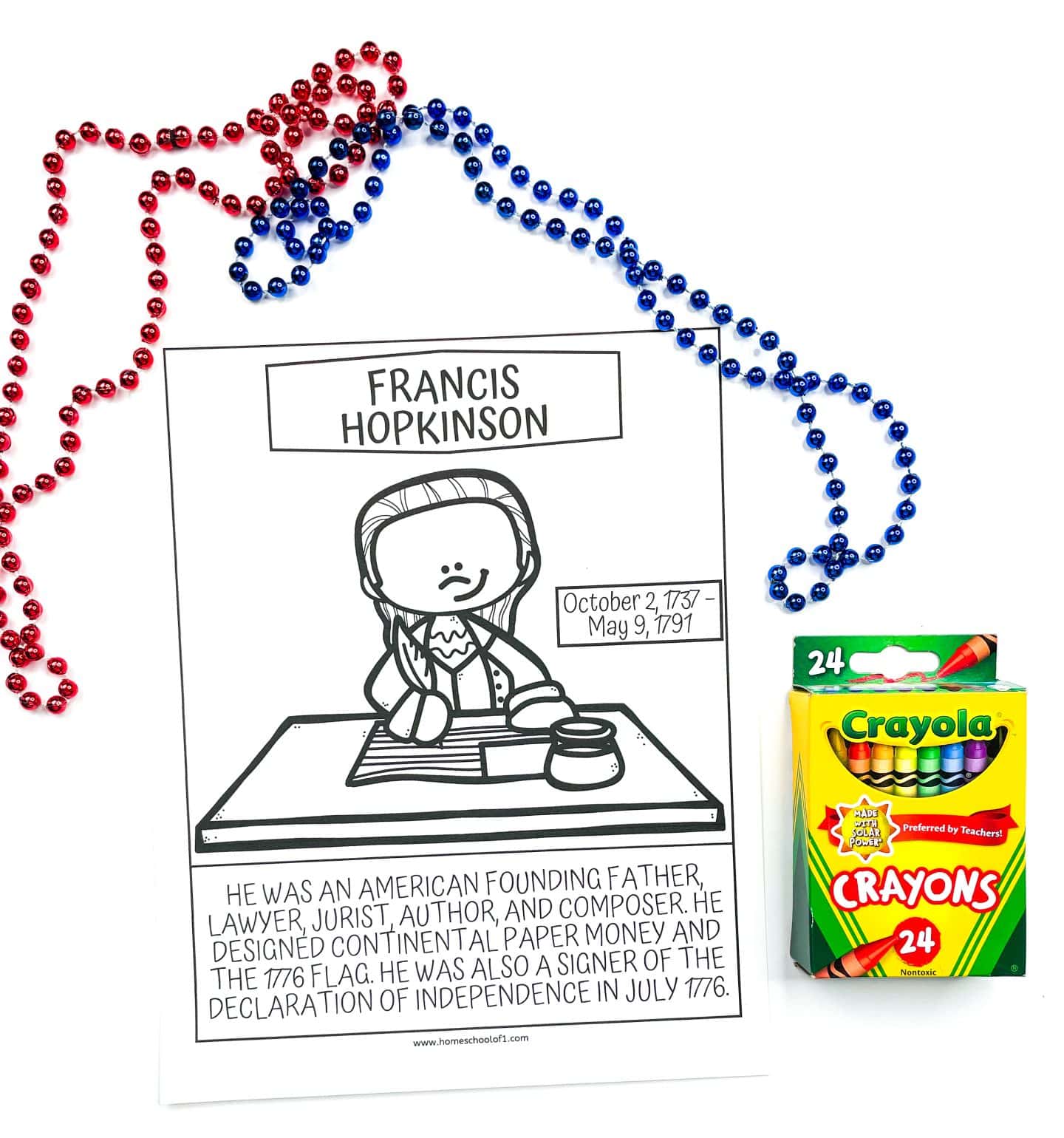
1776 Flag
The first official United States flag was adopted by an Act of Congress on June 14, 1777.
George Washington commissioned Betsy Ross to execute their design for presentation to Congress.
There were 13 stars and 13 stripes representing the colonies.
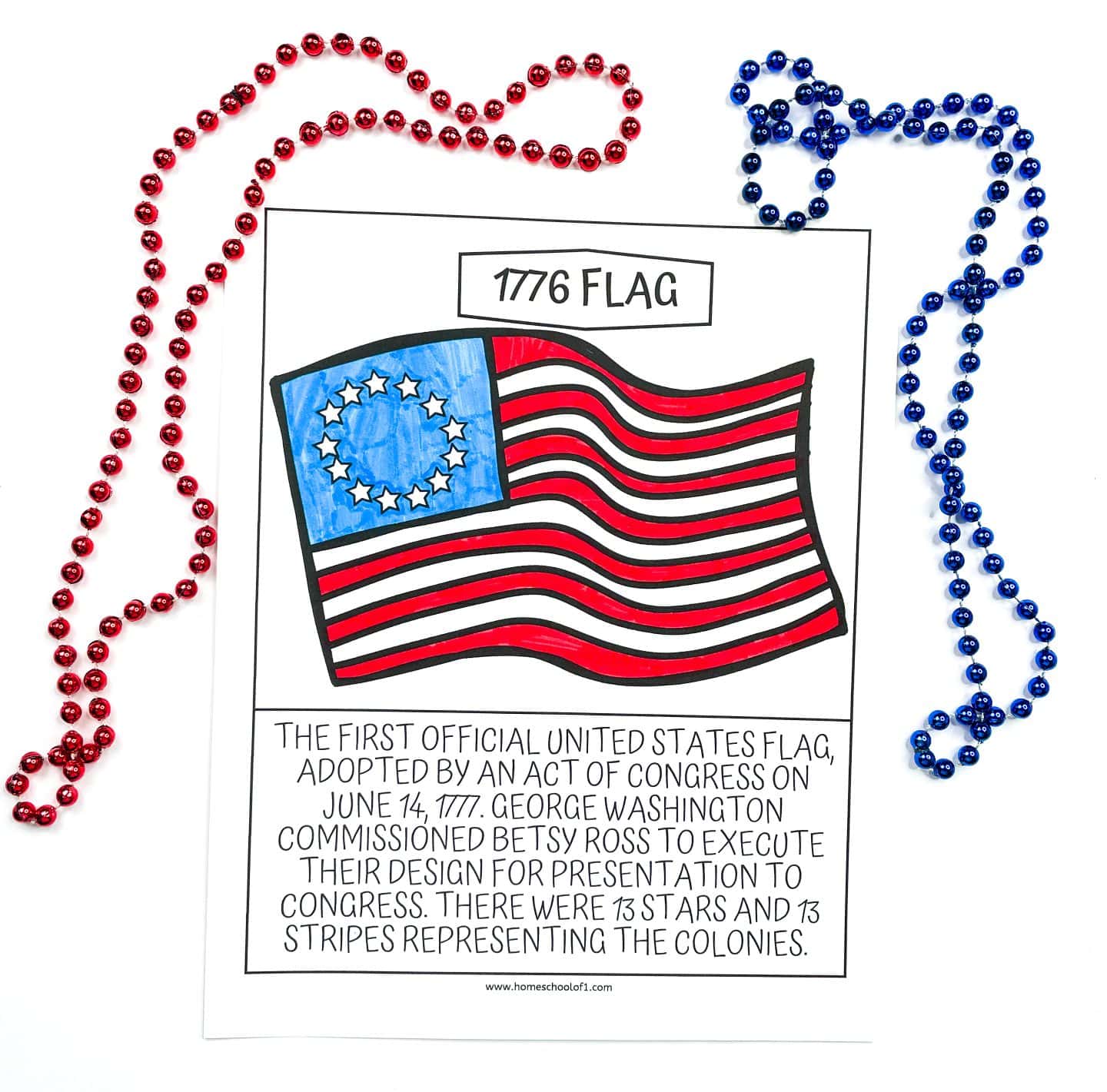
Betsy Ross
January 1, 1752 – January 30, 1836
The seamstress Betsy Ross is credited with sewing the first American flag.
The 1776 flag is also called the Betsy Ross flag. According to legend, she allegedly finalized the design, arguing for stars with five points because the cloth could be folded and cut out with a single snip.
Who was Betsy Ross? is an excellent book to help children learn all about this American legend.
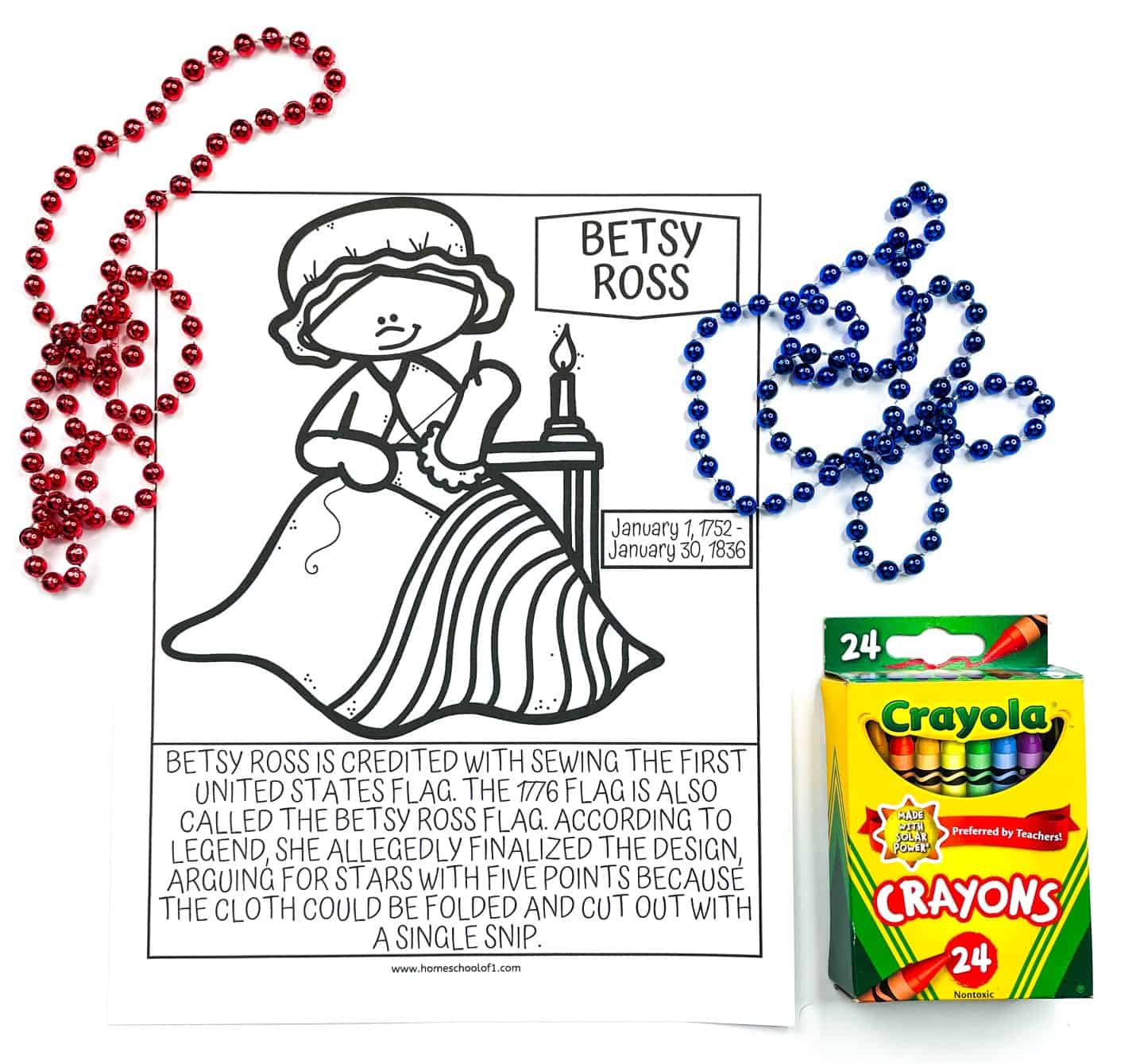
War of 1812
June 18, 1812–February 17, 1815, between Great Britain & America.
The star spangled banner had 15 stars & 15 stripes.
On September 14, 1814, U.S. soldiers at Baltimore’s Fort McHenry raised a huge American flag to celebrate a crucial victory over British forces during the War of 1812. The Town that Fooled the British is a fantastic story of the war of 1812 for kids.
The sight of those “broad stripes and bright stars” inspired Francis Scott Key to write a song that eventually became the United States national anthem.
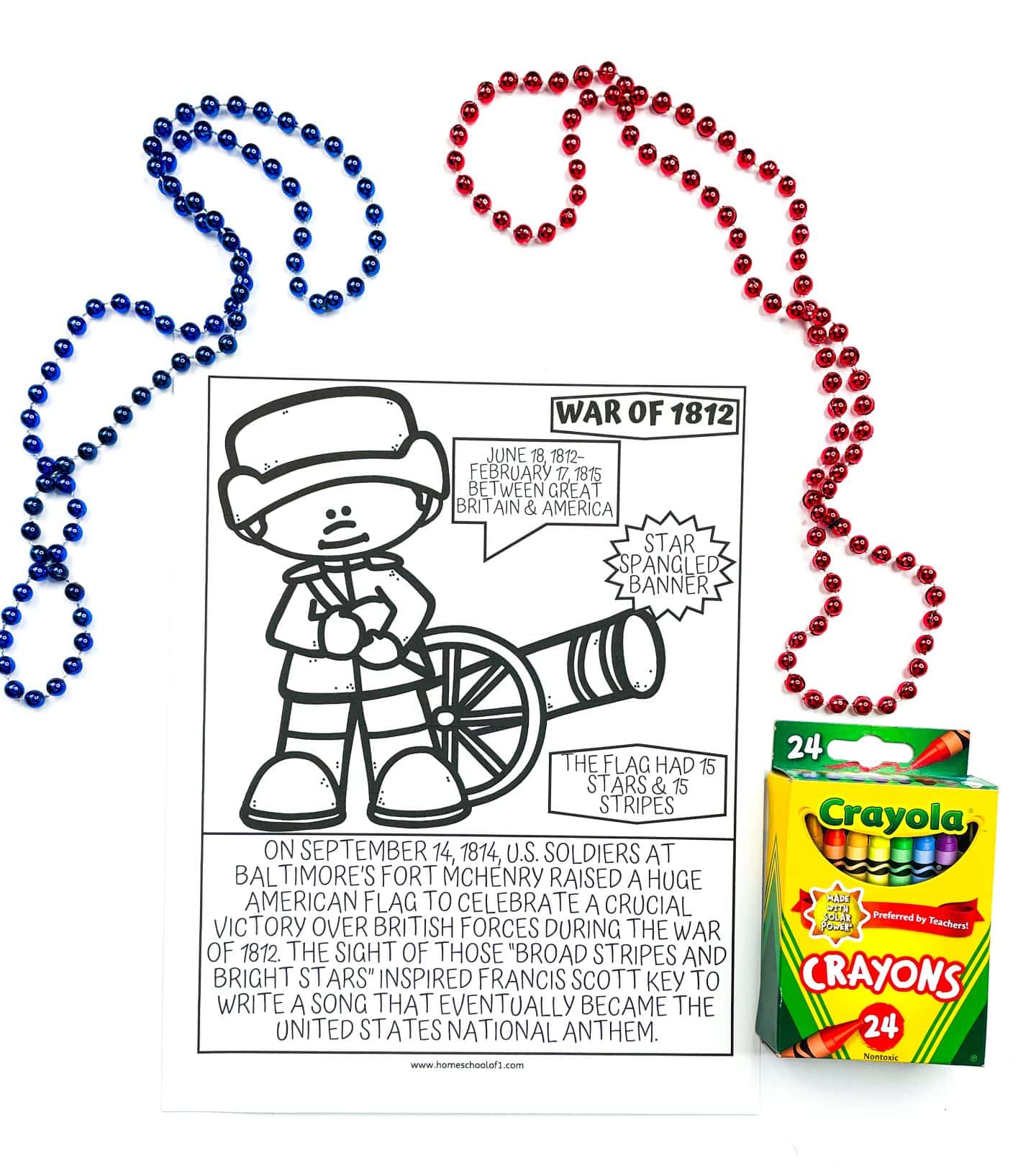
Mary Pickersgill
February 12, 1776 – October 4, 1857.
Mary was the creator of the Star-Spangled Banner.
The flag weighed about 50 pounds, and it took 11 men to raise it onto a 90-foot flagpole.
Our Flag Was Still There: The True Story of Mary Pickersgill and the Star-Spangled Banner is an excellent read for kids.
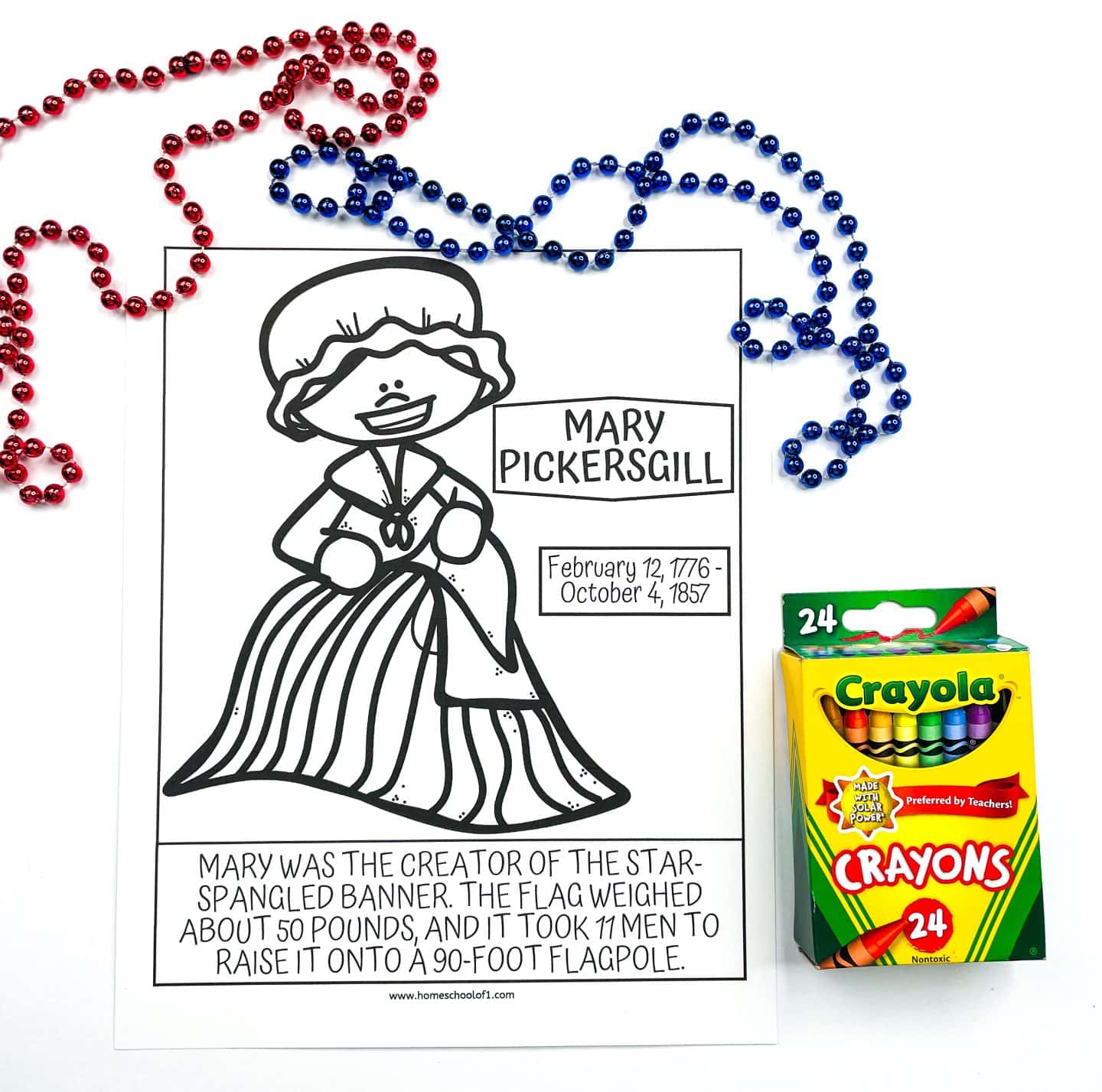
1818 Flag
On April 4, 1818, the flag was changed to have 20 stars.
With a new star to be added when each new state was admitted, the number of stripes would remain at 13 so as to honor the original colonies.
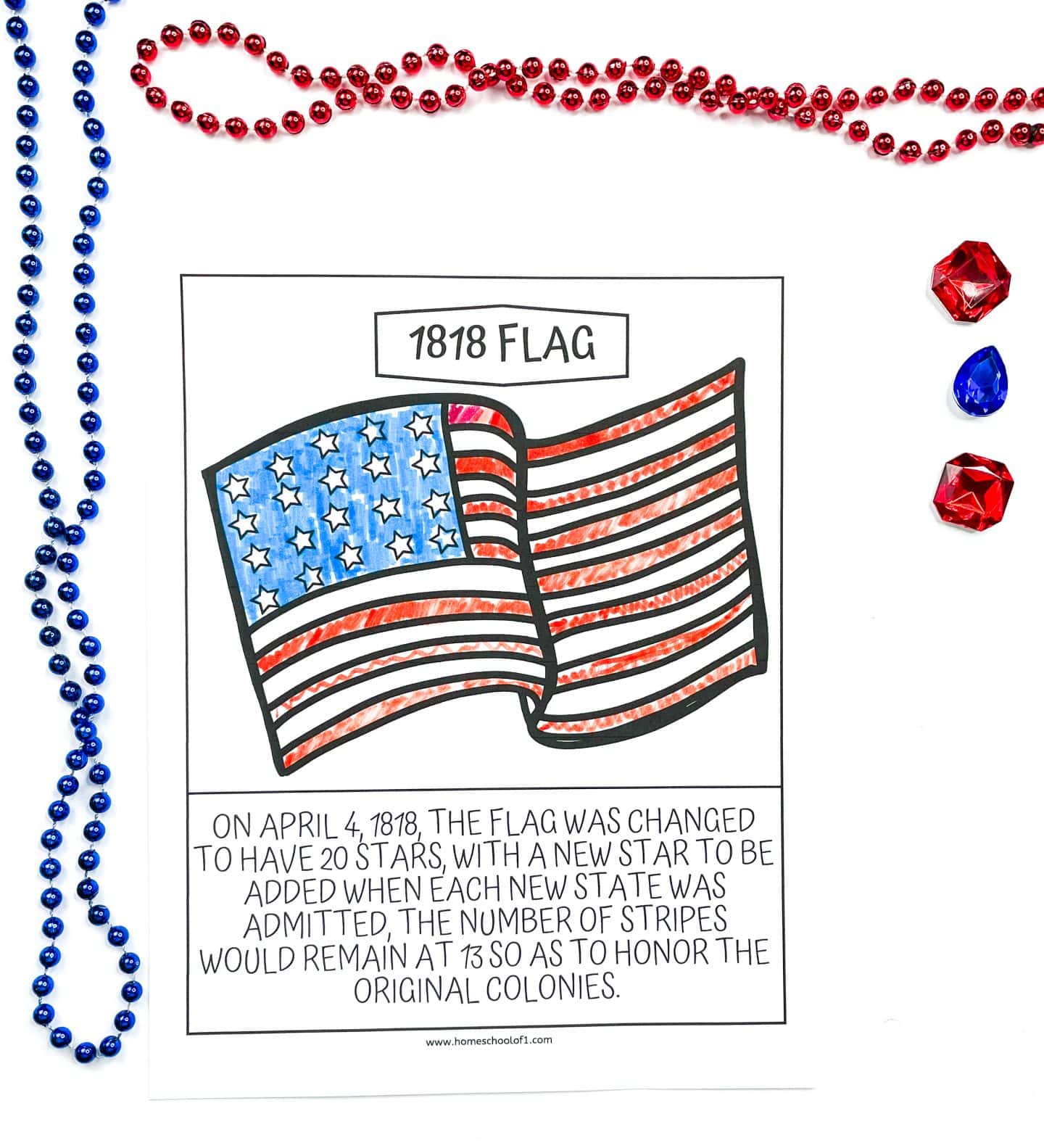
Pledge Allegiance to the Flag of the United States of America
The Pledge of Allegiance was written in August 1892, by Francis Bellamy.
The most recent alteration of its wording came on Flag Day (June 14) in 1954, when the words “under God” were added. Grab our free Pledge of Allegiance coloring pages that go really well with this worksheet.
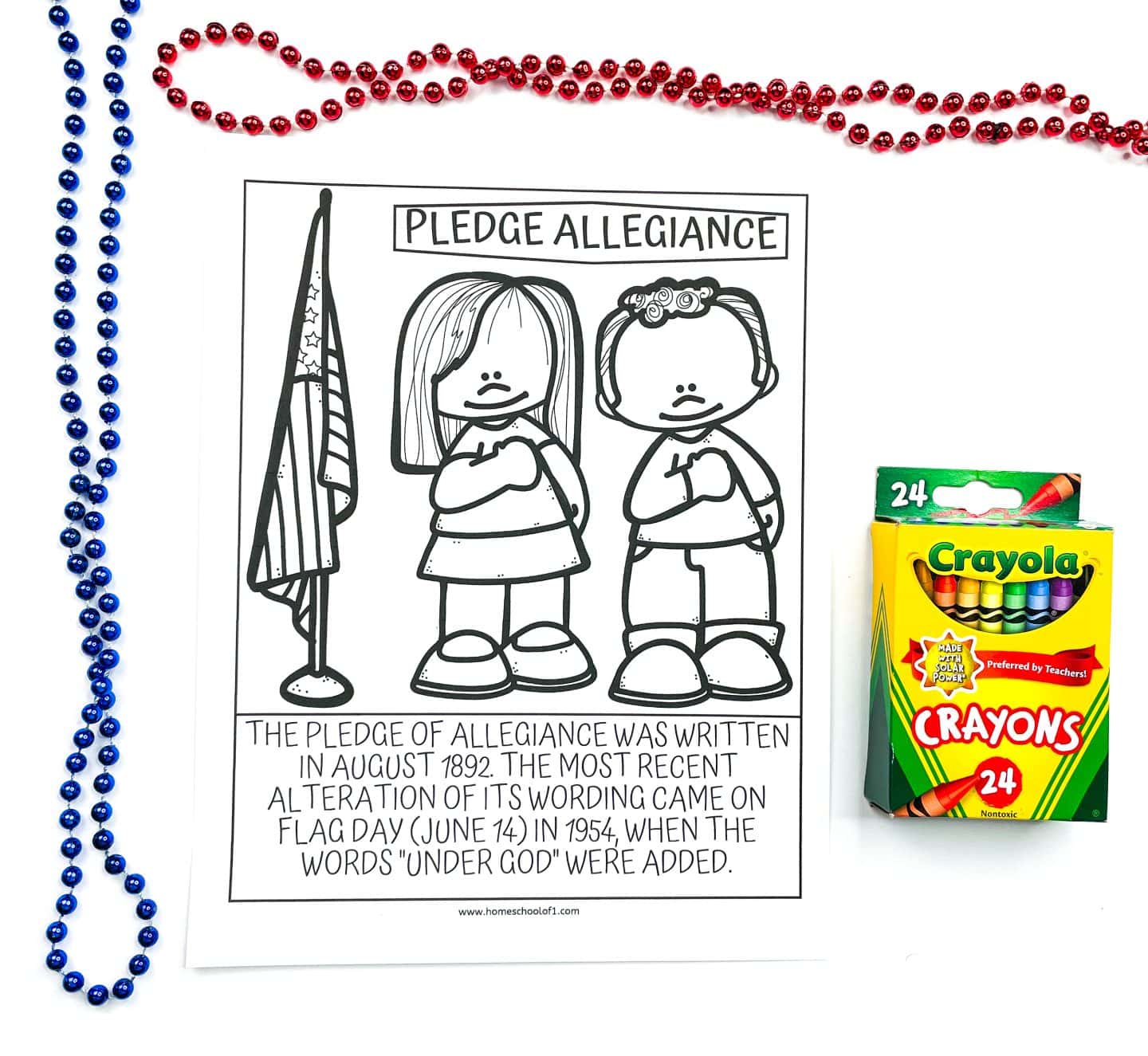
Flag Day
Flag Day commemorates the adoption of the flag of the United States on June 14, 1777.
It is not an official federal holiday, and only Pennsylvania celebrates it as a state holiday.
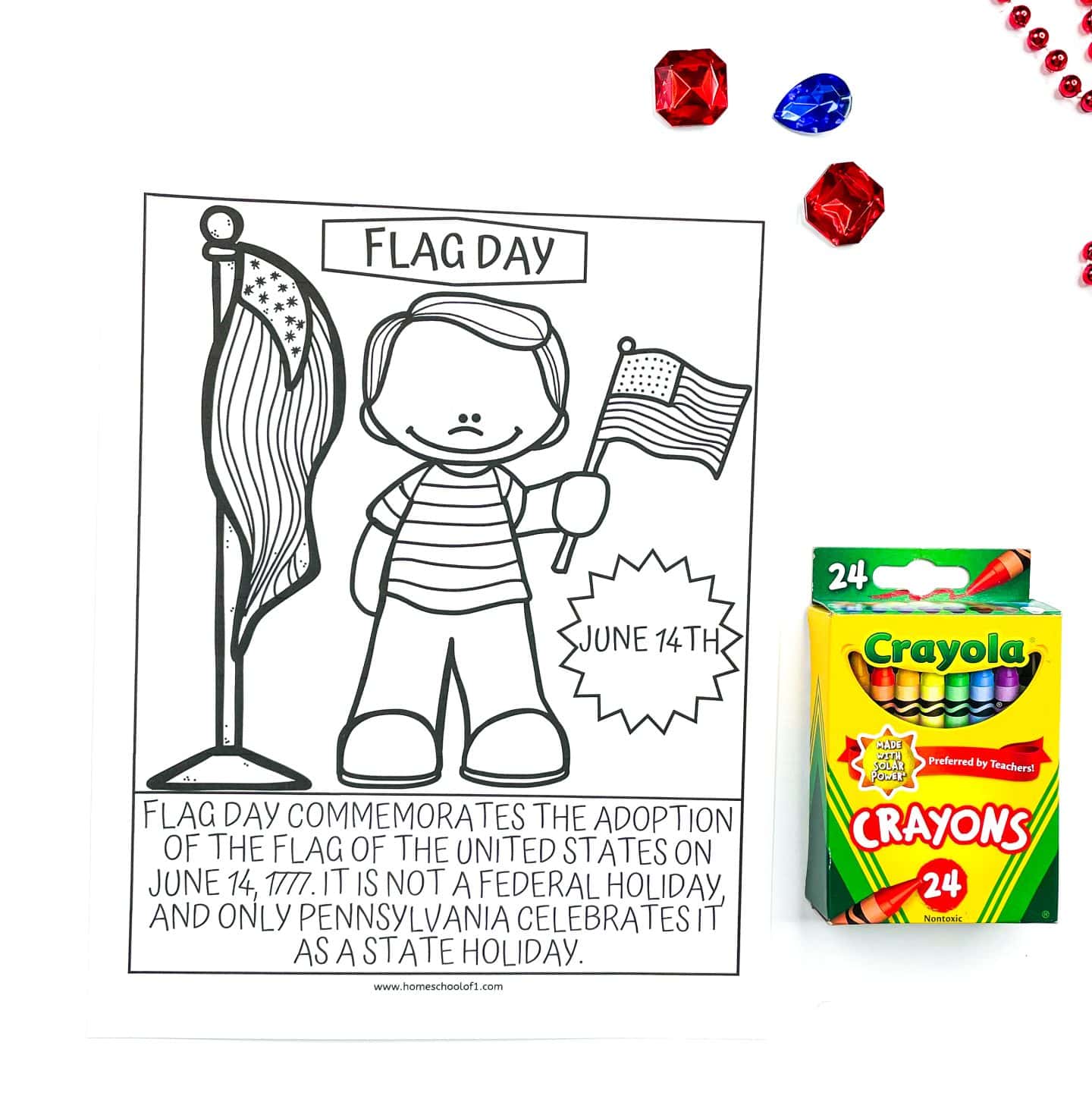
Flag of America
On August 21, 1959, President Eisenhower issued Executive Order 10834 establishing the design of the 50-star flag. You can also use this Dwight D. Eisenhower unit study.
There are 50 stars for the 50 states of America and the 13 stripes remain for the original colonies.
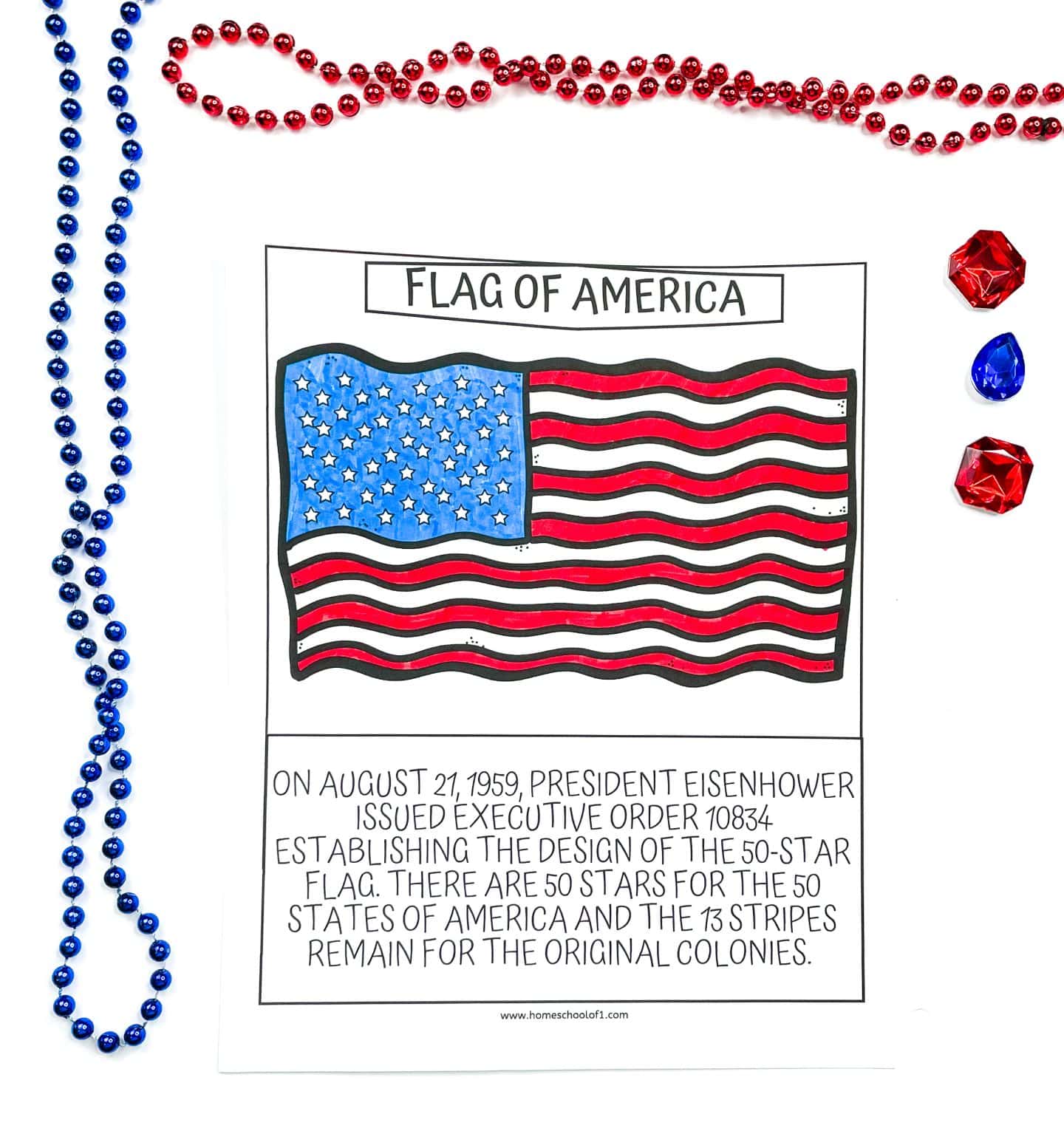
Man on the Moon
The first United States flag on the moon was deployed by Neil Armstrong and Edwin “Buzz” Aldrin during the Apollo 11 mission on 20 July 1969.
There are now 6 American flags on the moon.
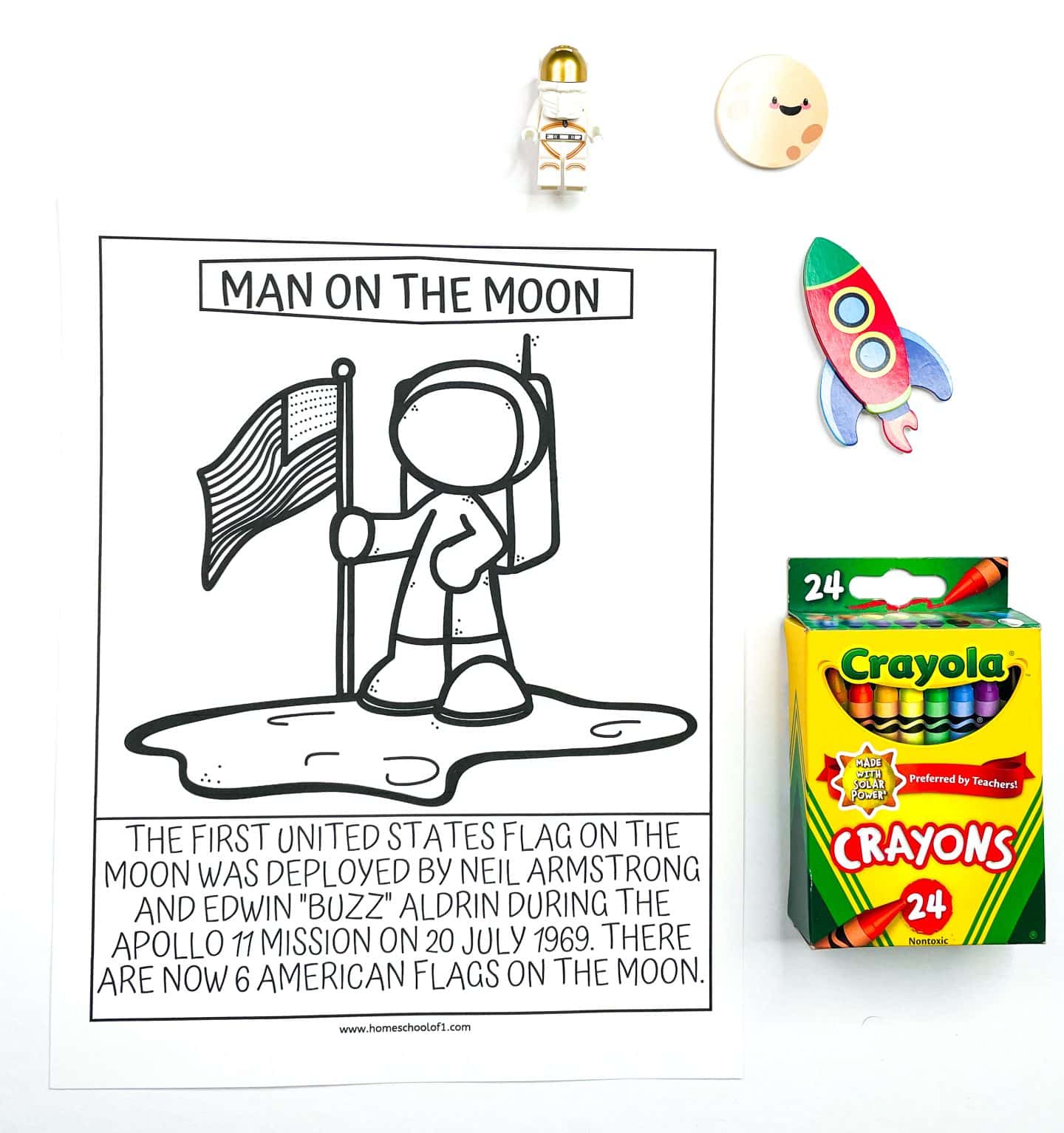
What are the nicknames for the American flag?
The American flag has a few popular nicknames including:
- Stars and Stripes,
- Old Glory,
- Star-Spangled Banner
Books about the American flag for kids
- F Is for Flag
- Why Are There Stripes on the American Flag?
- I’m Your Flag So Please Treat Me Right
- America’s Flag Story
- Red, White, and Blue: The Story of the American Flag
Other Patriotic holidays with free worksheets
- Free Memorial Day color by number sheets
- Fourth of July scavenger hunt for Independence Day
Need to print later? Add this to your Pinterest board or share it on Facebook. You’ll have it handy whenever you’re ready to use it!
Get the free Flag Day coloring pages here!
Ready to grab your free printable? Just pop your name and email into the form below, and it’s all yours!
Last Updated on 12 April 2025 by Clare Brown

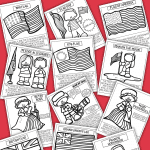
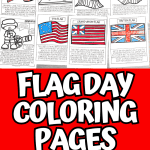


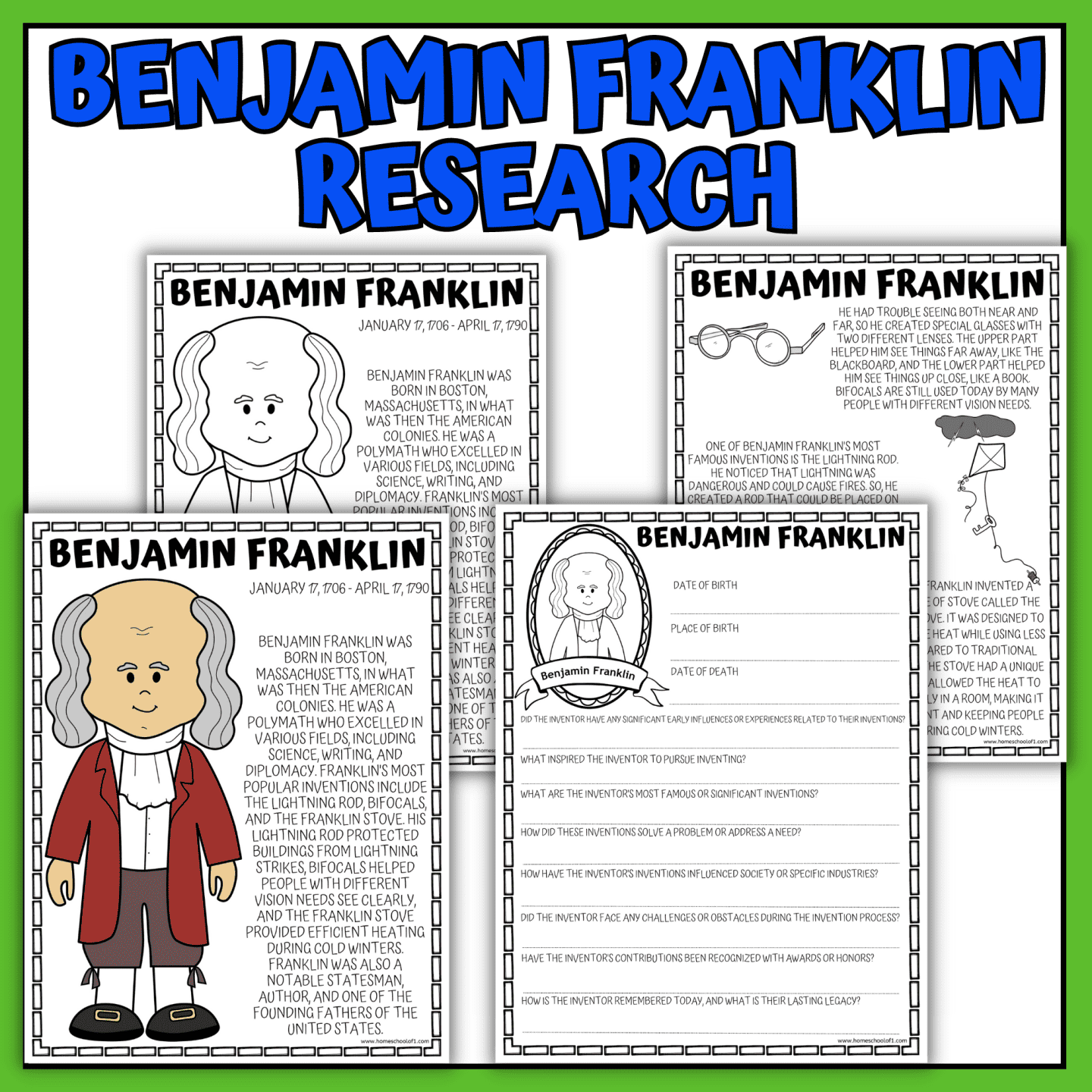
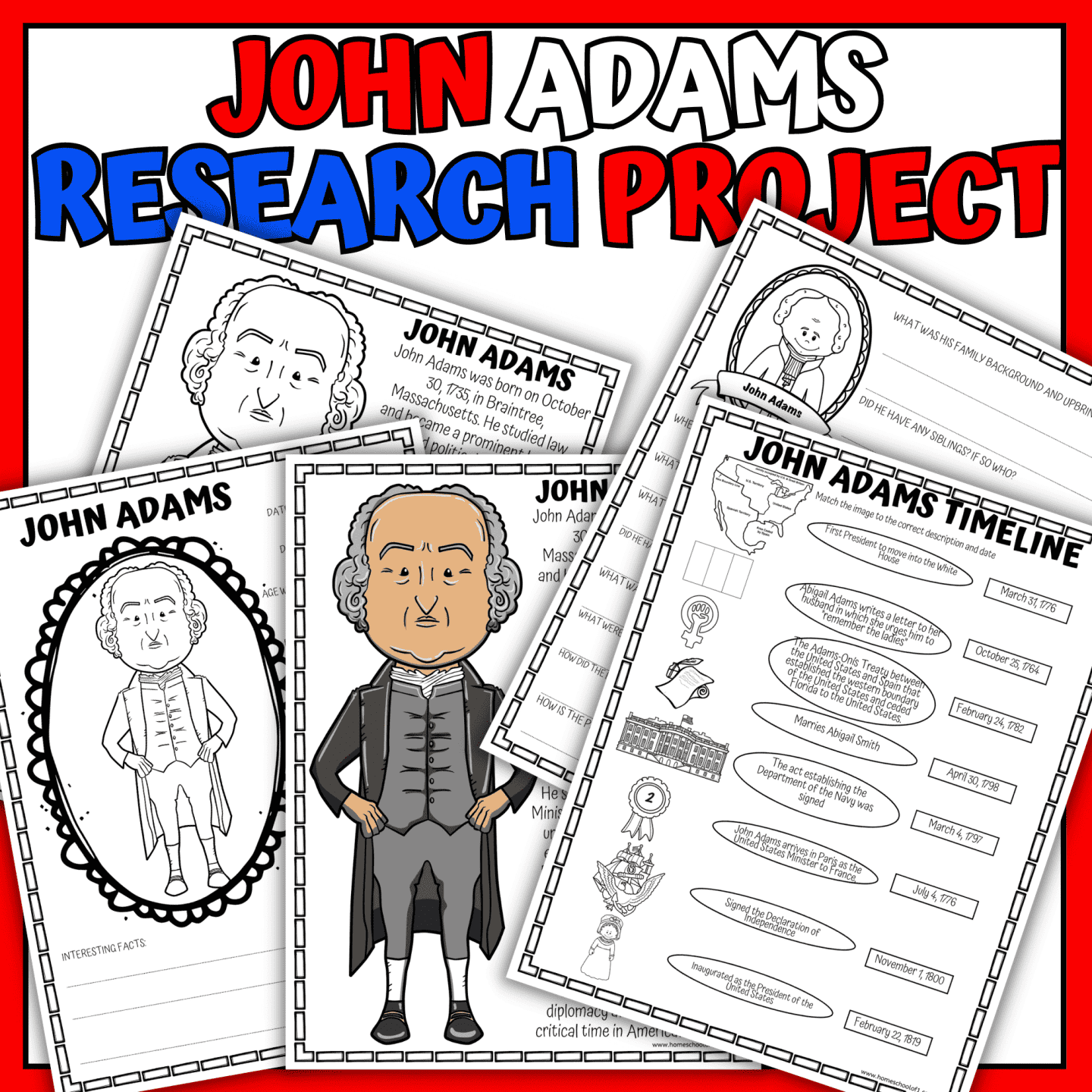
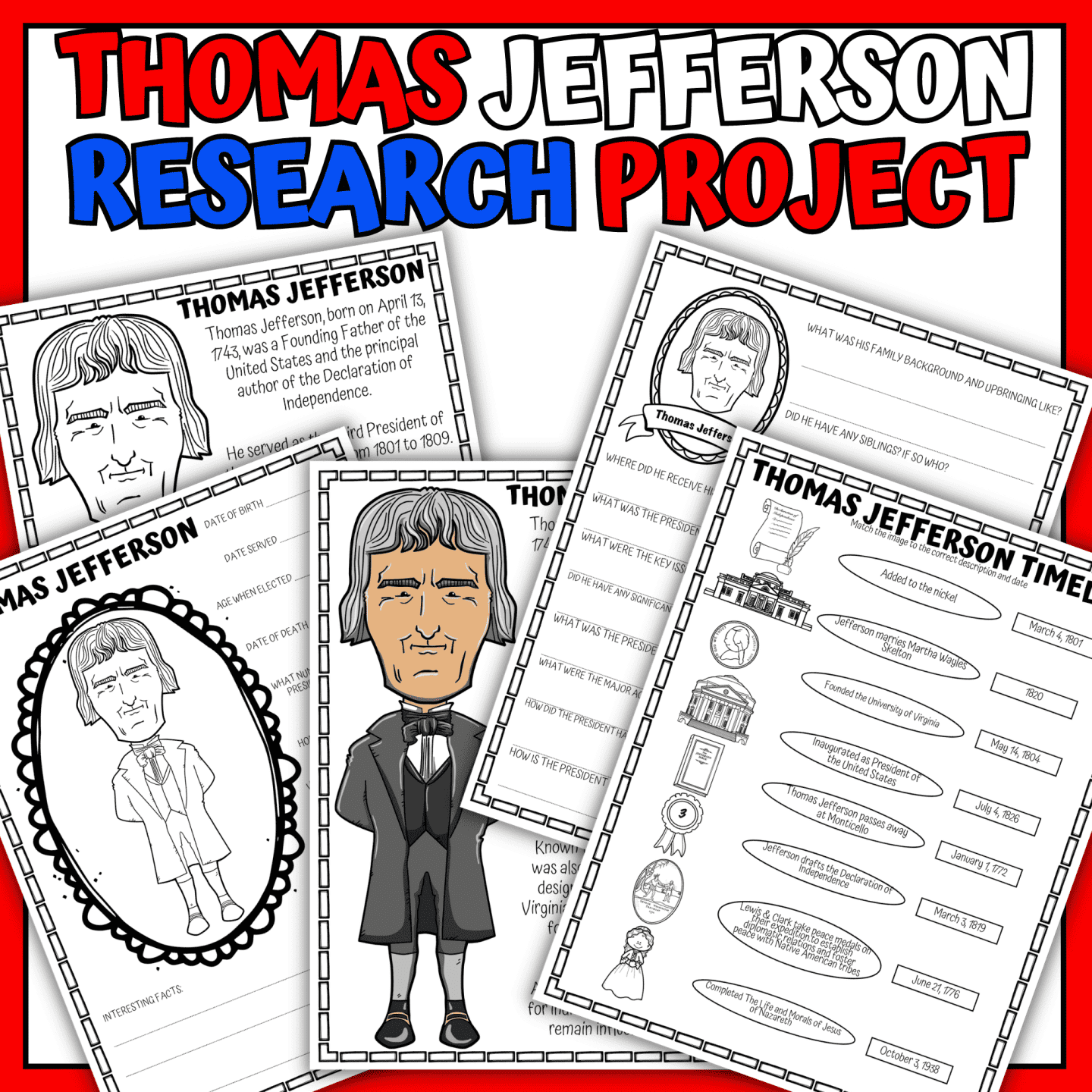
thank you
My pleasure I hope the kids enjoy them 🙂
The Flag Day Worksheets provide a huge improvement in children’s understanding of the complicated origin of our National flag. Below is more information for further clarification.
1. The Grand Union Flag served as America’s unofficial National flag from December 3, 1775, to June 14, 1777. The first person to raise this flag was Continental Navy Lieutenant John Paul Jones aboard the Continental Navy Ship “Alfred” in the Delaware River. On January 1, 1776, General George Washington raised the Grand Union Flag at his headquarters in Cambridge, Massachusetts. The Grand Union Flag was America’s unofficial National flag on our first Independence Day — July 4, 1776. (Source: “Our Flag.” Joint Committee on Printing. United States Congress. H. Doc. 100-247. Washington: U.S. Government Printing Office. 1989. p. 3, https://nps.gov/parkhistory/online_books/flag/h_doc_100-247/index.htm)
2. According to the U.S. government, there is no proof that Betsy Ross made the first Stars and Stripes flag. The story is based on Ross family tradition from 1870 — nearly a century after the Revolutionary War. Although Mrs. Ross made flags for 50 years, she made flags for Pennsylvania’s navy during the Revolution. Lastly, the so-called “Betsy Ross Flag” dates from the early 1790s — not from the Revolution. (Source: “Our Flag.” p. 2, https://nps.gov/parkhistory/online_books/flag/h_doc_100-247/index.htm)
3. General George Washington — Commander-in-Chief of the Continental Army — had nothing to do with creating the Stars and Stripes because it was a naval affair. Congress’ Marine (maritime) Committee authored the U.S. Flag Resolution of June 14, 1777. (Source: “Our Flag.” p. 1, https://nps.gov/parkhistory/online_books/flag/h_doc_100-247/index.htm)
To the contrary, General Washington was concerned about creating a standard Army flag — not the Stars and Stripes — to be carried along with each Army regiment’s flag. These flags are called “colors.” (Source: Furlong, William Rea and Byron McCandless. “So Proudly We Hail: The History of the United States Flag.” Washington: Smithsonian Institution Press. 1981. pp. 117 [bottom] to 119.)
4. Congress never created a committee to design or create the Stars and Stripes. As mentioned in point No. 3 above, Congress’ Marine Committee authored the U.S. Flag Resolution of June 14, 1777. This was nearly a year after the Declaration of Independence was adopted. Creating an official National flag was a lower priority because of the preexising Grand Union Flag. Congress’ higher priority was creating the Great Seal of the United States to denote America’s sovereignty. Congress created a committee to design the Great Seal of the United States on Independence Day — July 4, 1776. (Source: “The Great Seal of the United States.” United States Department of State. Washington: U.S. Government Printing Office. Feb. 1986. p. 1.)
5. Betsy Ross was not associated with her eponymous flag until Charles H. Weisgerber painted “Birth of Our Nation’s Flag” for the Columbian Exposition in Chicago in 1893. Sources:
(a) Furlong and McCandless. pp. 116 and 117.
(b) Harker, John Balderston. “Betsy Ross’s Five Pointed Star: Elizabeth Claypoole, Quaker Flag Maker — A Historical Perspective.” Melbourne Beach, FL: Canmore Press. 2005. p. 94.
Submitted by Earl P. Williams, Jr., U.S. flag historian (paleovexillologist)
Thank you so much for taking the time to add all of these details about the American flag.